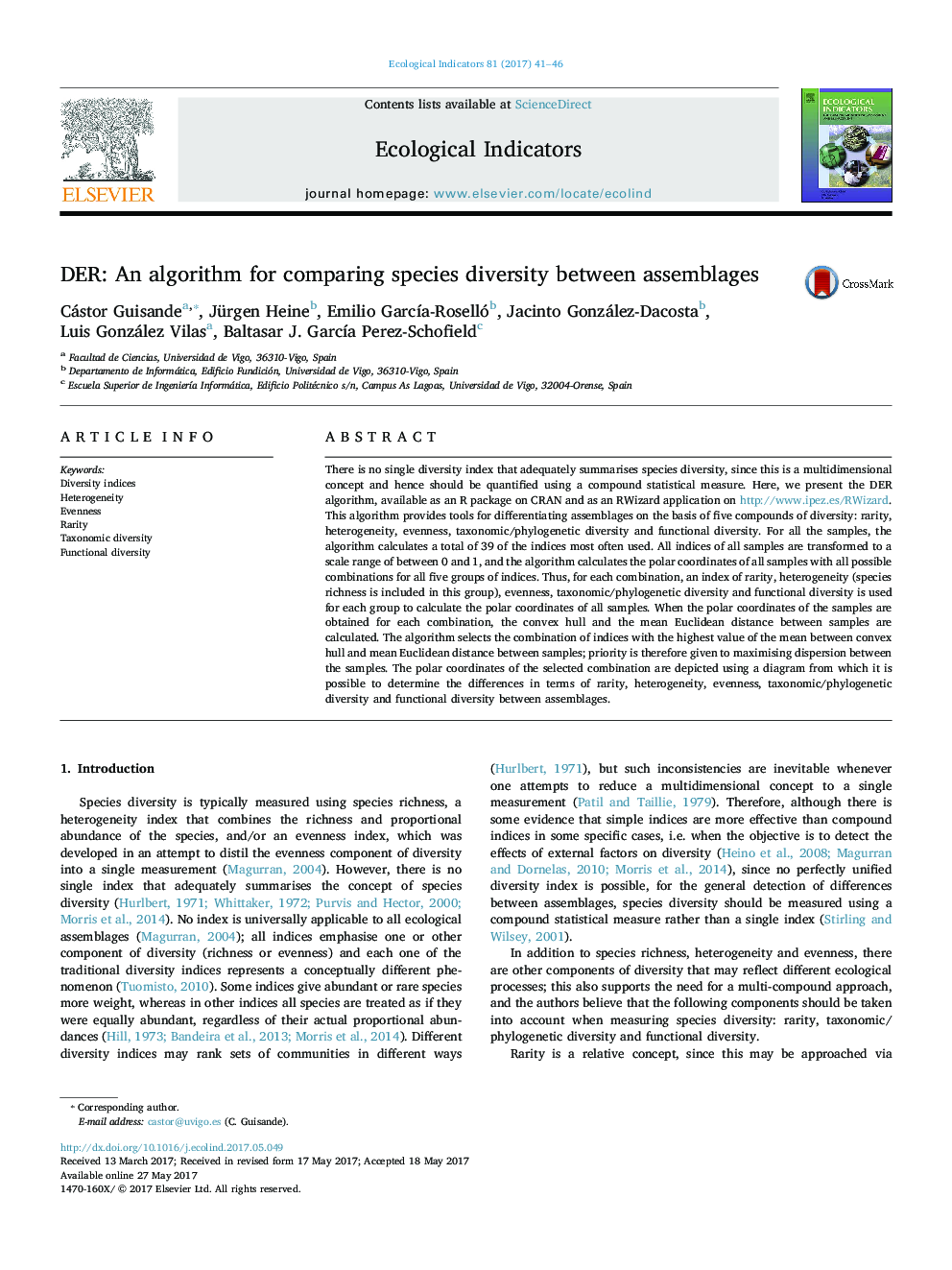| Article ID | Journal | Published Year | Pages | File Type |
|---|---|---|---|---|
| 5741408 | Ecological Indicators | 2017 | 6 Pages |
There is no single diversity index that adequately summarises species diversity, since this is a multidimensional concept and hence should be quantified using a compound statistical measure. Here, we present the DER algorithm, available as an R package on CRAN and as an RWizard application on http://www.ipez.es/RWizard. This algorithm provides tools for differentiating assemblages on the basis of five compounds of diversity: rarity, heterogeneity, evenness, taxonomic/phylogenetic diversity and functional diversity. For all the samples, the algorithm calculates a total of 39 of the indices most often used. All indices of all samples are transformed to a scale range of between 0 and 1, and the algorithm calculates the polar coordinates of all samples with all possible combinations for all five groups of indices. Thus, for each combination, an index of rarity, heterogeneity (species richness is included in this group), evenness, taxonomic/phylogenetic diversity and functional diversity is used for each group to calculate the polar coordinates of all samples. When the polar coordinates of the samples are obtained for each combination, the convex hull and the mean Euclidean distance between samples are calculated. The algorithm selects the combination of indices with the highest value of the mean between convex hull and mean Euclidean distance between samples; priority is therefore given to maximising dispersion between the samples. The polar coordinates of the selected combination are depicted using a diagram from which it is possible to determine the differences in terms of rarity, heterogeneity, evenness, taxonomic/phylogenetic diversity and functional diversity between assemblages.
